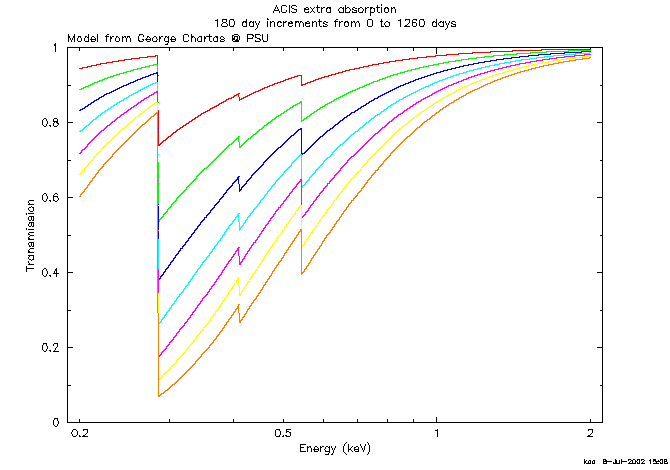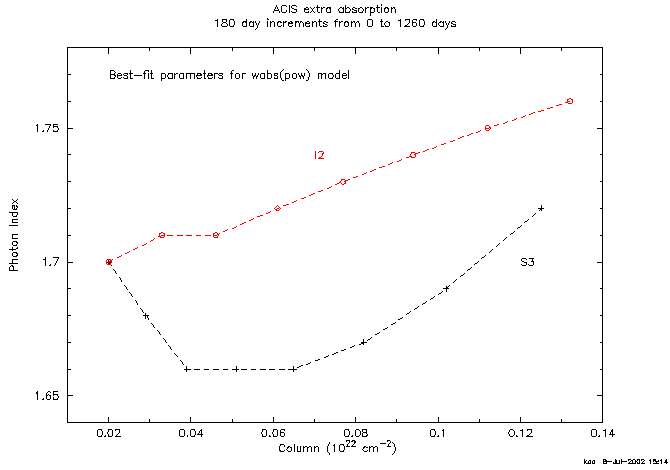
These notes are based on work by the ACIS hardware team as encoded in an XSPEC model by George Chartas with the assistance of Konstantin Getman. This model is PRELIMINARY but gives a rough idea of the scientific consequences of the accumulating stuff. It is available from the XSPEC new models page.
This plot, produced by the qdp file acisabs.qdp, shows the transmission of the extra stuff at 180 day intervals from launch (when the plot would be unity at all energies). Chandra was launched on July 23, 1999 so we are now (on July 8, 2002) close to the 1080 day (penultimate) curve on the plot.

This plot, produced by the qdp file acisabs_s3.qdp, shows simulated S3 spectra (with infinite S/N) for a power-law model with a slope of 1.7 and a column of 2e20. The spectra are simulated at 180 day intervals with the top spectrum using the effective areas at launch.

For this input spectrum the observed count rate in the 0.5-2.0 keV energy range D days after launch is (1-D*0.000175) times the rate at launch.
This plot, produced by the qdp file acisabs_i2.qdp, shows simulated I2 spectra (with infinite S/N) for a power-law model with a slope of 1.7 and a column of 2e20. The spectra are simulated at 180 day intervals with the top spectrum using the effective areas at launch.

For this input spectrum the observed count rate in the 0.5-2.0 keV energy range D days after launch is (1-D*0.000132) times the rate at launch.
This plot, produced by the qdp file acisabs_param.qdp, shows the best-fit parameters obtained by fitting a simple absorbed power-law model to the simulated spectra above. This gives a rough idea of the errors in measured parameters if the extra absorption is not taken into account. Note that the fits are not good at low energies, particularly for S3.
